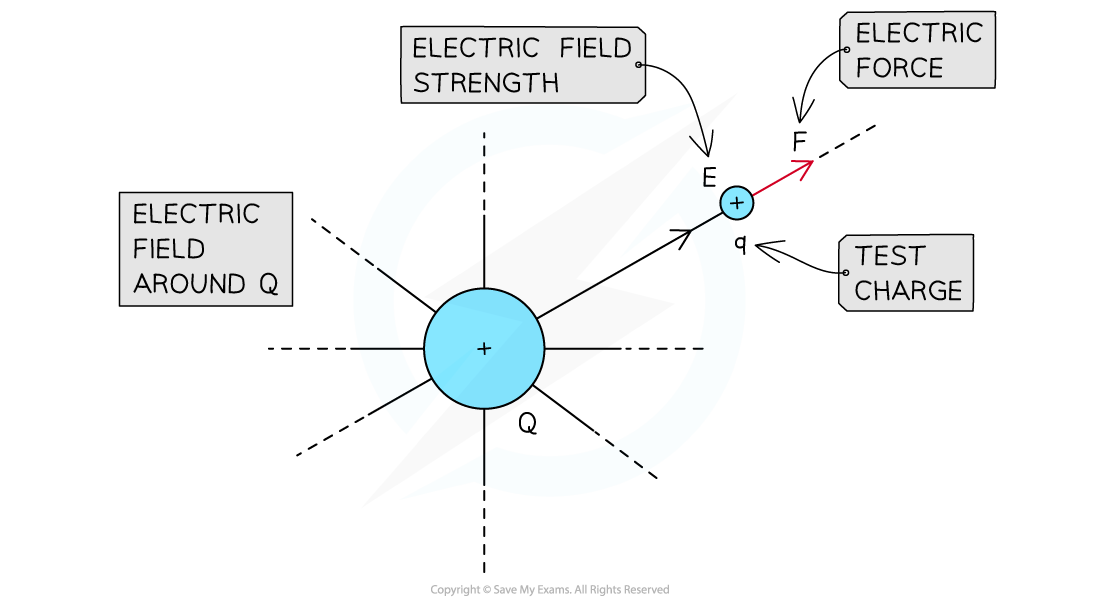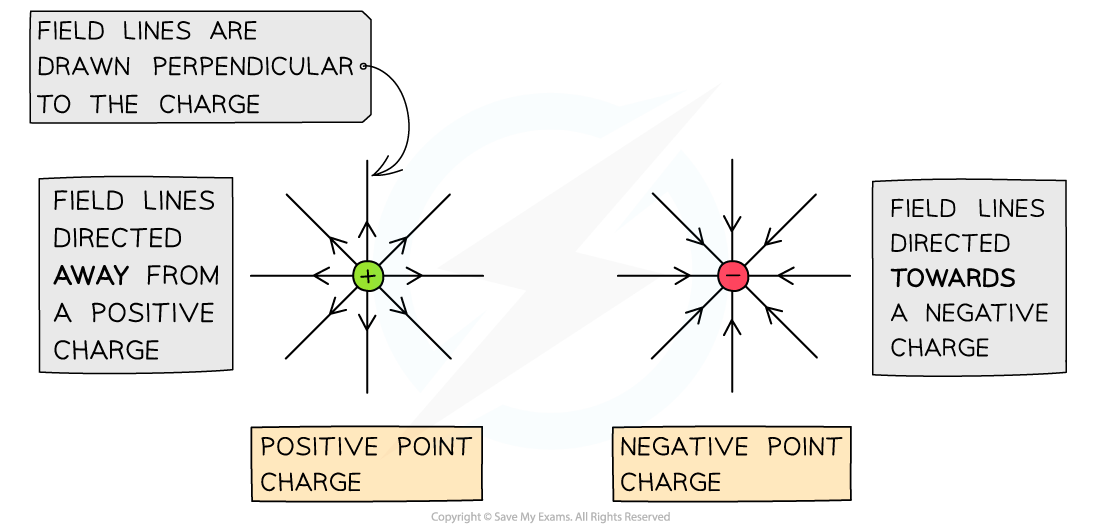Electric Fields
- An electric field is a region of space in which an electric charge “feels” a force
- It is a vector field
- The direction of the electric field is the same as the direction of the electric force
Electric Field Strength
- The electric field strength is a measure of the strength of the electric field
The electric field strength is defined as the magnitude of the electric force per unit charge experienced by a small positive test charge placed at that point

The strength of the electric field generated by charge Q is measured by placing a test charge q in the field
- The equation to calculate the electric field strength at a given point in space is:
![]()
- Where:
- E = electric field strength in newtons per coulomb N C–1
- F = electric force in newtons (N)
- q = electric charge in coulombs (C)
Representing Electric Fields
- Electric field lines are used to visualise electric fields
- Arrows along the lines indicate the direction of the field
- The arrows always point away from the positive charge and towards negative the charge
- Around a point charge or a charged sphere, the electric field lines are directly radially inwards or outwards:
- If the charge is positive (+), the field lines are radially outwards
- If the charge is negative (–), the field lines are radially inwards
- This shares many similarities to radial gravitational field lines around a point mass
- The difference being that the gravitational force is always attractive, whilst the electric force can be either attractive or repulsive

Electric field lines around isolated positive and negative point charges
- The strength of the electric field is proportional to the number of lines per unit cross-sectional area
- A stronger electric field is represented by arrows that are closer together
- The field lines between opposite charges are connected, showing attraction
- The field lines between like repelling charges never connect

Electric field lines showing attraction between a positive and a negative charge, and repulsion between two positive charges
Uniform and Non-Uniform Electric Fields
- A uniform electric field is a field of force in which the strength of the electric force is the same throughout
- It is represented by parallel and equally spaced field lines
- Whenever the spacing between the field lines changes, the electric field is non-uniform

Uniform and non-uniform electric fields between two parallel plates
Worked Example
A charged particle is in an electric field with electric field strength 3.5 × 104 N C-1, where it experiences a force of 0.3 N.Calculate the charge of the particle.
Step 1: Write down the known quantities
- E = 3.5 × 104 N C-1
- F = 0.3 N
Step 2: Write down the equation for the electric field strength
![]()
Step 3: Rearrange the above equation to calculate the charge q
![]()
Step 4: Substitute the numbers into the above equation
![]()
q = 8.6 × 10–6 C
Exam Tip
When drawing field lines, make sure they never cross. The electric field can only have one value at any given point.
